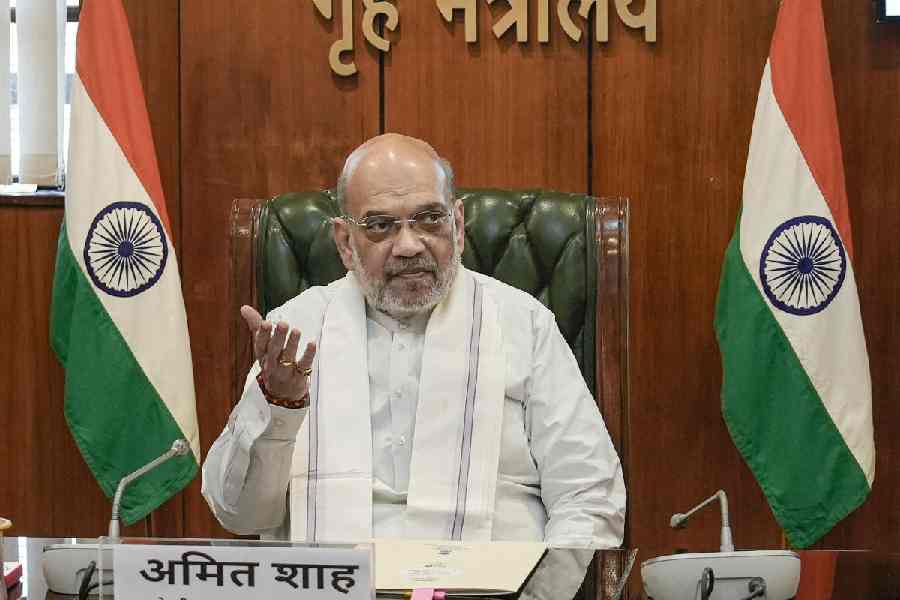The state government on Friday told Jharkhand High Court that it held extensive tests in Covid-19 containment zone Hindpiri.
Advocate-general Rajiv Ranjan told the division bench of Chief Justice Dr Ravi Ranjan and Justice S.N. Prasad that 8,440 tests had been done in Hindpiri that comprises wards 21 and 22 of the Ranchi Municipal Corporation with around 45,000 people. The administration held door-to-door tests and screened 38,643 persons from here so far, Ranjan said.
The government claimed that lockdown curbs in many areas inside Hindpiri had been relaxed owing to lack of Covid-19 patients, but some micro-containment pockets were sealed.
Door-to-door samples in Hindpiri were collected just after Id in random areas which came negative, Ranjan said.

Chief minister Hemant Soren (left) checks out a bottle of sanitiser at his residence in Ranchi on Friday as ICICI Bank officials look on. The ICICI Bank officials met the CM to hand over 50,000 gloves, 50,000 three-layered masks, 240 bottles of sanitisers and 70 thermal scanners. The officials told Hemant that the bank had been distributing coronavirus safety kits in all the districts of the state. The chief minister lauded the bank’s efforts. (Manob Chowdhary)
However, the amicus curiae in the case, advocate Indrajit Sinha refuted Ranjan’s claims, and said samples had not been properly collected.
Sinha pointed out a letter by Shivam Sahay, a Hindpiri resident and high court advocate, on how the administration adopted a “pick-and-choose” method to identify micro-containment zones in Hindpiri.
Sahay’s letter, a copy of which is in possession of The Telegraph, mentions that screening on May 27 stopped midway due to faulty equipment used by the medical staff.
Relaxation and sealing are being done depending on the intensity of protests, the letter said. The administration left open alleys where protests are strong and sealed other areas that hadn’t even reported positive cases, the letter claimed.
The division bench will hear the case again on June 5.











